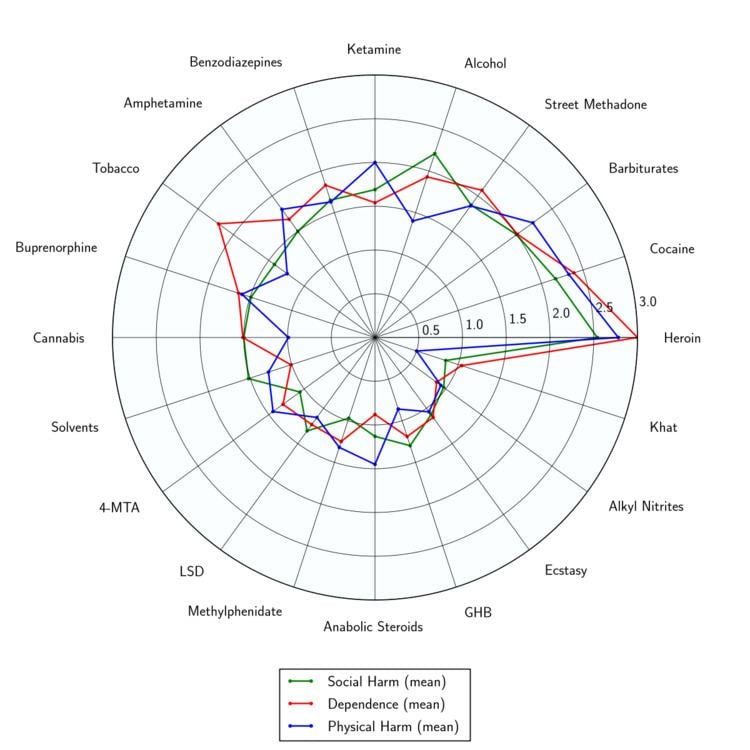 | ||
Research data indicates that steroids affect the serotonin and dopamine neurotransmitter systems of the brain. In an animal study, male rats developed a conditioned place preference to testosterone injections into the nucleus accumbens, an effect blocked by dopamine antagonists, which suggests that androgen reinforcement is mediated by the brain. Moreover, testosterone appears to act through the mesolimbic dopamine system, a common substrate for drugs of abuse. Nonetheless, androgen reinforcement is not comparable to that of cocaine, nicotine, or heroin. Instead, testosterone resembles other mild reinforcers, such as caffeine, or benzodiazepines. The potential for androgen addiction remains to be determined.
Contents
- Abuse potential
- Diagnostic Statistical Manual
- International Classification of Diseases
- National Institute on Drug Abuse
- Causes and treatment
- Childhood trauma
- Criminals
- Law enforcement
- Professional wrestling
- References
Anabolic steroids are not psychoactive and cannot be detected by stimuli devices like a pupilometer which makes them hard to spot as a source of neuropsychological imbalaces in some AAS users.
Abuse potential
The Diagnostic Statistical Manual IV (DSM IV) and the International Classification of Diseases, Volume 10 (ICD 10) differ in the way they regard Anabolic-Androgenic Steroids' (AAS) potential for producing dependence.
DSM IV regards AAS as potentially dependence producing. ICD 10 however regards them as non-dependence producing. Anabolic steroids are not physically addictive but users can develop a psychological dependence on the physical result.
Diagnostic Statistical Manual
For DSM-IV, anabolic-androgenic steroid dependency is found in the “other substance-related disorder” (include inhalants, anabolic steroids, medications) section and can be coded, depending on which diagnostic criteria are met.
International Classification of Diseases
ICD–10 criteria for dependence include experience of at least three of the following during the past year:
However, the following ICD-10-CM Index entries contain back-references to ICD-10-CM F55.3:
ICD-10 goes on to state that “although it is usually clear that the patient has a strong motivation to take the substance, there is no development of dependence or withdrawal symptoms as in the case of the psychoactive substances.”
ICD-9-CM will be replaced by ICD-10-CM beginning October 1, 2014, therefore, F55.3 and all other ICD-10-CM diagnosis codes should only be used for training or planning purposes until then.
National Institute on Drug Abuse
The National Institute on Drug Abuse (NIDA) says that "even though anabolic steroids do not cause the same high as other drugs, steroids are reinforcing and can lead to addiction. Studies have shown that animals will self-administer steroids when given the opportunity, just as they do with other addictive drugs. People may persist in abusing steroids despite physical problems and negative effects on social relationships, reflecting these drugs’ addictive potential. Also, steroid abusers typically spend large amounts of time and money obtaining the drug; another indication of addiction. Individuals who abuse steroids can experience withdrawal symptoms when they stop taking them, including mood swings, fatigue, restlessness, loss of appetite, insomnia, reduced sex drive, and steroid cravings, all of which may contribute to continued abuse. One of the most dangerous withdrawal symptoms is depression. When depression is persistent, it can sometimes lead to suicidal thoughts. Research has found that some steroid abusers turn to other drugs such as opioid to counteract the negative effects of steroids."
Causes and treatment
Male anabolic-androgenic steroid abusers often have a troubled social background.
Childhood trauma
25% of male weightlifters reported memories of childhood physical or sexual abuse in an interview. Anabolic steroids are sometimes used by people with muscle dysmorphia (a very specific type of body dysmorphic disorder (BDD)) as a defense mechanism. Interestingly, yohimbine, while it was originally considered a flop of a supplement, because it did not increase testosterone levels as first suspected, have at higher doses been discovered to be useful to facilitate recall of traumatic memories in the treatment of post traumatic stress disorder (PTSD).
Criminals
Anabolic steroid use has been associated with an antisocial lifestyle involving various types of criminality.
Law enforcement
Steroid abuse among law enforcement is considered a problem by some. "It's a big problem, and from the number of cases, it's something we shouldn't ignore. It's not that we set out to target cops, but when we're in the middle of an active investigation into steroids, there have been quite a few cases that have led back to police officers," says Lawrence Payne, a spokesman for the United States Drug Enforcement Administration. The FBI Law Enforcement Bulletin stated that “Anabolic steroid abuse by police officers is a serious problem that merits greater awareness by departments across the country". It is also believed that police officers across the United Kingdom "are using criminals to buy steroids and abuse their power for sexual gratification" which he claims to be a top risk factor for police corruption.
Professional wrestling
Following the murder-suicide of Chris Benoit in 2007, the Oversight and Government Reform Committee investigated steroid usage in the wrestling industry. The Committee investigated WWE and Total Nonstop Action Wrestling (TNA), asking for documentation of their companies' drug policies. WWE CEO and Chairman, Linda and Vince McMahon respectively, both testified. The documents stated that 75 wrestlers—roughly 40 percent—had tested positive for drug use since 2006, most commonly for steroids.
